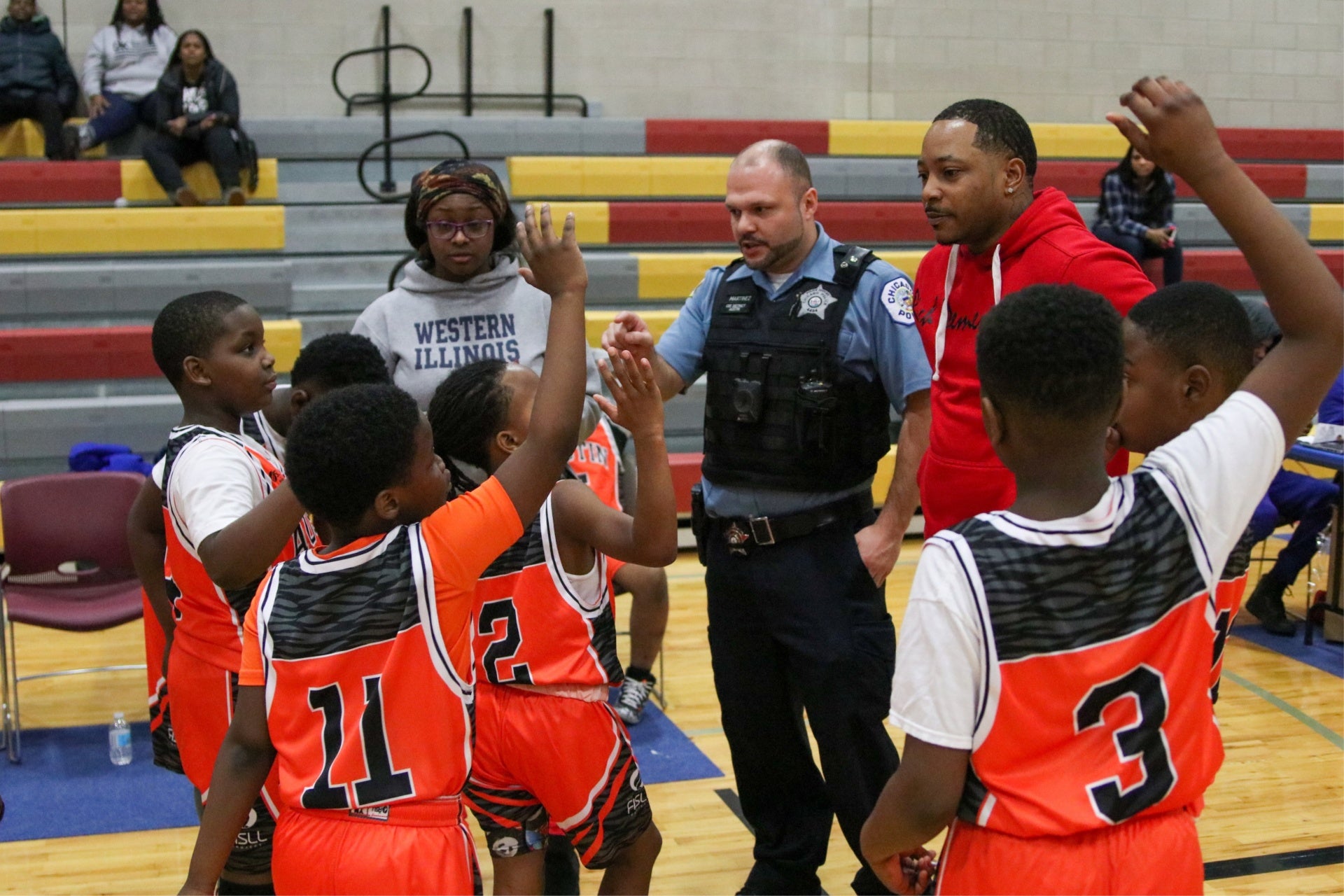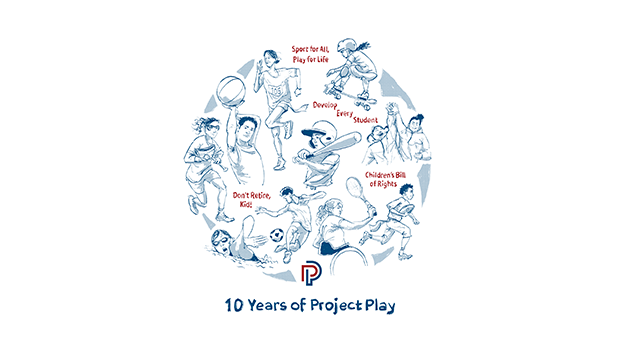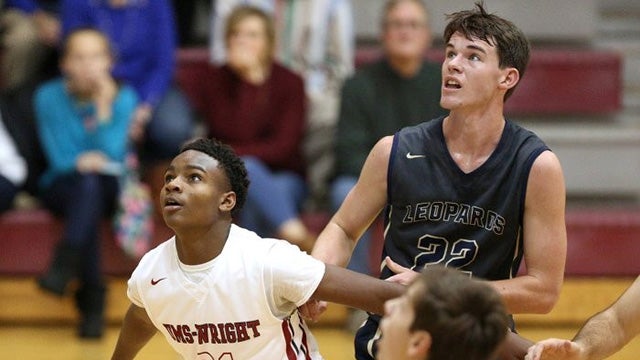As we close out the most challenging year in recent memory, there is much uncertainty. Whenever our society returns to “normal” — whatever that means — there will be profound changes to how we live. Sports are not immune to this.
As part of the Aspen Institute Sports & Society Program’s Future of Sports conversation series, which will restart in early 2021, we asked smart, thoughtful people who work in sports this question: What innovations and/or disruptions to sports during Covid-19 do you think will become permanent after the pandemic? Here are some of the responses, edited for brevity.
Investment in female sports
Nicole LaVoi, University of Minnesota’s Tucker Center for Research on Girls and Women in Sport: For women’s teams and sports at the high-performance levels, the truth is that Covid-19 unmasked for everyone what many already knew — massive, unjustifiable, and unsustainable spending on men’s sport. Unfortunately, historically and currently, Title IX is being unfairly and inaccurately blamed for the massive cutting of men’s and women’s teams in schools, rather than drawing attention to continued overinvestment in men’s basketball and football.
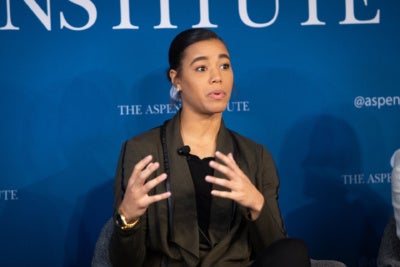
WNBA player and activist Natasha Cloud at a 2019 Future of Sports event.
Women’s sport provides an opportunity for increasing returns, brand authenticity, and value spend, in addition to alignment with activism. Look no further than the example set in the summer of 2020 by the WNBA athletes, commissioner, most owners, and the orange hoodie and Say Her Name campaigns that set the standard for athlete activism and social change. Viewership for the WNBA this season was up 68% during a time when all the men’s leagues were also competing simultaneously. The time is now to call out sexism, gender bias, patriarchy, and male dominance embedded in sport. The time is now to equitably resource sport opportunities for girls and women in sport. The time is now to disrupt traditional models of sport and leadership that privilege boys and men. The time is now to disrupt, challenge, and dismantle cultures, processes, policies, contracts, sponsorships, media coverage, marketing, and resourcing that privilege boys and men. The cost to girls and women in sport is too high if this opportunity for revaluation created by Covid-19 is lost.
Athlete activism over race
Nevin Caple, founder of Return on Inclusion: The pandemic and racial justice movement have disrupted life as we know it and sparked innovations to shift consciousness at every level of sport. Our athletes are no longer asking for permission but leveraging their social capital to send a clear and direct message to their coaches and administrators: join them or get out of the way. As a result, the need for every coach and athletic administrator to go through a social and cultural competence “basic training” of sorts when it comes to working with athletes and engaging colleagues from underrepresented backgrounds is urgent.
Victoria Jackson, Arizona State University sports historian: Black women and nonbinary WNBA players and allies led the U.S. sports leagues’ activist statements and actions, as they long have. Black women college athletes also sparked the flames across American university campuses, organizing athletes locally and connecting nationally. 2020 has also been a year of remarkable work by historians and journalists — Black women and people of color, in particular — to shine a light and refuse to allow these athletes to be cast into the shadows, to liminal spaces and hidden histories. I also see more Americans breaking from the forces that have long encouraged us to keep an insular focus and believe in myths of Exceptional America. Sports-watching Americans have been more likely in 2020 than in previous years to think and dream beyond U.S. borders.
Why then, am I thinking of grace, empathy, and humanity during the coronavirus pandemic? When reflecting on the past, it’s often trying times like these and the compassionate actions in response to them that effect substantive change. We recognize the humanity in others; we feel empathy; we act with grace. Sports may or may not lead the way, but our sports world is definitely along for the ride.
NCAA “amateurism” and athlete/university relationship
Jesse Washington, The Undefeated: We can’t separate the effects of the pandemic from the effects of the massive racial justice movement of 2020. With such a high percentage of Black athletes in college football and basketball, and with pro athletes demonstrating a revival of Black sports activism, during this pandemic, college athletes demonstrated an unprecedented level of empowerment. They took back a certain measure of control from what has traditionally been a relatively powerless situation for most athletes. When you layer in the fact that most Division I college football and basketball coaches are White, and that Power 5 football has an administrative culture that can be unsympathetic to the Black Lives Matter movement, I believe that 2020 will mark a turning point in the power dynamic between college athletes and the teams they play for. Due to the intertwined forces of Covid and racial justice, top-level college athletes will have more agency and power than they ever have had before.
Jessica Luther, “Loving Sports When They Don’t Love You Back” co-author: I don’t think this system, whose roots are deep and which is controlled by wealthy people who do not want to give up any money or power, is going away anytime soon. But I do hope the time that college athletes spent in the spring and summer not playing sports and instead protesting, talking to each other, and assessing the world around them planted some roots of their own.
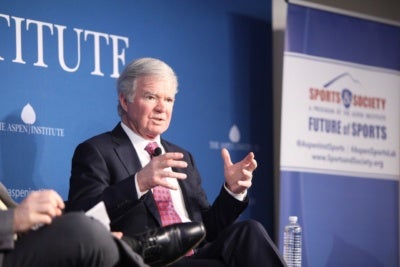
NCAA President Mark Emmert at Future of College Sports in December 2019.
It does feel like we will look back to the year 2020 as a point of change for so many things over the next few years, decades even. We will see that seeds planted over the last 12 months have sprouted and grown in directions we could never have imagined. I hope that one of those sprouts is a new lens on collegiate athlete labor, a brighter spotlight on the humanity of those athletes, and the shift in these power dynamics. I hope these athletes continue to remind us all of the former two in order to force the latter.
Kathleen Bachynski, “No Game for Boys to Play” author: Many college sports programs have historically lacked basic oversight to protect athlete health. Rather than implementing scientifically sound public health measures to protect against life-threatening conditions, they have instead frequently gambled with athletes’ welfare, responding only after the ultimate tragedy has taken place, and sometimes not even then. Unfortunately, not even a pandemic that has killed 300,000 Americans has yet fundamentally altered this approach.
Several college athletes have already experienced season-ending symptoms due to their bouts with Covid-19. The fact that the risk imposed upon athletes also extends outward to trainers, coaches, staff, families, and ultimately the broader community simply makes the failure to prioritize athlete well-being all the more inexcusable. Permanent change that leads institutions to actively prioritize both athletes’ health and the public’s health is an urgent, ethical necessity. But it will not happen without immense, concerted, and difficult action that insists on a fundamental reckoning with the values and goals underlying college sports programs.
Andy Schwarz, economist/Professional Collegiate League: For an organization (the NCAA) that still maintains the legal argument that paying athletes is wrong because it might lead to athletes being cut-off from their peers on campus, it’s amazing how quickly we’ve simply accepted the idea that college sports teams need to have no physical connection to the campus they represent (such as San Jose State decamping to Arcata, California, the University of New Mexico football team temporarily moving to Las Vegas, or the Stanford men’s basketball team spending weeks in North Carolina). I do not think colleges will feel the need to backpedal from that.
Distant learning will be the norm for athletes even as regular students return to on-campus learning because it makes long road trips and a better TV schedule more manageable. The “college experience” of many college athletes will end up a lot more like the online education wing of a community college. No matter what, we will see more people accepting that this is a profession and that the professionals engaged in the conduct have all of the duties of professionals (even playing during a pandemic if the boss says so), but also therefore deserving of the rights of a professional as well (workers’ comp, Occupational Safety and Health Administration regulations).
New college sports regulations
Ross Dellenger, Sports Illustrated: NCAA officials are exploring ways to adjust the recruiting calendar. Virtual recruiting has been a hit. Not only has it given coaches more of a life outside of football — less travel, for example — it has created deep bonds between player and coach. I expect more dead recruiting periods (when coaches can’t recruit) and fewer contact periods in future NCAA calendars. I also expect NCAA officials to add into the calendar more opportunities for virtual recruiting.
In an unfortunate aftereffect of both the pandemic and upcoming NCAA legislative changes related to the one-time transfer rule and name, image, and likeness compensation, I expect the current model of college athletics to shift away from a broad-based system of multiple Olympic-style sports. Dozens of schools have already started to cut sports not named football and basketball, and I’d expect that only to continue. Many administrators believe that the NCAA’s Division I requirement of schools to sanction 16 sports teams will eventually fall, allowing more programs to be discontinued.
Karen Weaver, University of Pennsylvania: Never again should any athletic department go without an emergency fund. Now, no one could have predicted losing 60%-70% of revenues in just six months, so that’s not realistic. But having some kind of cash reserves that at least cover your fixed costs (debt service, fixed contracts and commitments) for one year seems reasonable for most Division I programs to have. And stop relying on the university to bail you out when there always seems to be inevitable, predictable overspending.
All personnel contracts should be renegotiated to do two things: 1) Limit the buyouts for underperforming football and basketball coaches to one year of base salary only (see Auburn firing its football coach and having to pay a $21.5 million buyout); and 2) Set a salary threshold for staff members to permit layoffs in financial distress so that athletic directors don’t have to have permission — or go through negotiations — in order to quickly adjust the payrolls.
Sports media layoffs
Ben Strauss, Washington Post: Nearly all of the leading sports media companies have had layoffs, led by ESPN. Networks continue to think about remote productions and slimmed down productions, so one issue is jobs in sports media. There is also the question of access. On the other side of the pandemic, will sports reporters be able to roam locker rooms before and after games in the same ways they were before and what impact would that have on coverage? We’ve also seen cord-cutting continue and the big media companies think more about streaming and direct-to-consumer, which in the next few years will likely have a bigger impact on how and where fans can watch games.
Technology in sports
Dave DuPont, TeamSnap: We have seen increased use of our sports communication and management platform in spite of reduced competitive activity, and we know there is no turning back. Experiencing how solutions like ours can reduce drudgery, save time, and facilitate sharing creates new expectations for athletes and their families. They will no longer accept traditional approaches. Nor will administrators in sports organizations. Similarly, the pandemic crisis has led to phenomenal growth in e-commerce. Society at large and purchasers of sports gear will simply no longer accept the hassle of purchasing products from local dealers. Sports gear brands, now that they have tasted the value of direct to consumer commerce, will also loathe returning to the past.
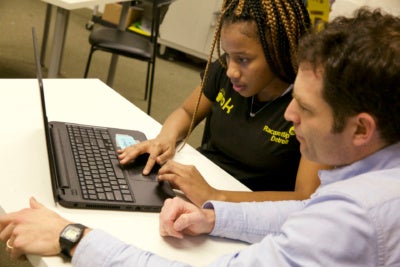
Photo: Racquet Up Detroit
On the negative side, there is a strong likelihood of a widening gap between the haves and the have nots in the amateur sports arena. We have already been experiencing the rise of elite competitive organizations pre-pandemic. These organizations are likely to emerge from the crisis unscathed. Recreational sports organizations, on the other hand, are likely to be seriously affected by the crisis. This is unfortunate because they provide the only organized sport activities available to the economically disadvantaged. Funds for public sports activities and facilities are almost certainly going to be constrained for the next months and years — unless we do something to reverse the trend.
Equity in youth sports
Travis Dorsch, Utah State University Families in Sport Lab: One innovation that may become permanent is the design and utilization of gamified e-training. While this will never take the place of in-person, coach-athlete interactions, having access to quality coaching, effective training regimens, and social connections from home has the potential to provide access to athletes in underserved areas.
Families may stay closer to home when pursuing competitive opportunities for their children, as recent data from our work with the Aspen Institute suggests. An added layer to this is that some families have taken advantage of the pause to get ahead. We have seen families engage their children in extensive private training to avoid large social gatherings. We have seen travel teams formed by parents to offset the closures of school- and community-sponsored sports. And we have seen families actually pick up and move across state lines so their children could compete in areas where sports have been allowed to continue. These are privileged pursuits, in that not all families can afford them. Sadly then, it appears that the pandemic has catalyzed the growth of so many opportunity gaps that already existed.
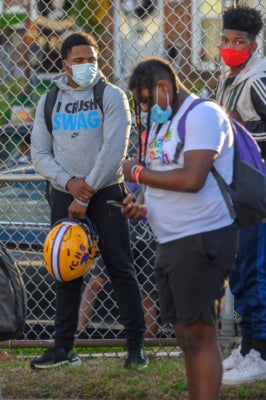
High school football players in Camden, NJ await a decision on whether practice can be held safely. Photo: Avi Steinhardt
Julie McCleery, University of Washington Center for Leadership in Athletics: I believe that youth sports will become a policy and funding priority for state and municipal governments. But my fear is that severe losses in access to youth sports and physical activity will become permanent. Save for concussion laws and background checks, state governments have played almost no role in attending to the health, well-being, and safety of young athletes. Covid changed that. Suddenly, governor’s offices had to pay attention to and develop some expertise about the youth sports ecosystem. In Washington State, that meant dealing with lobbying from pay-to-play organizations that pushed for reopening and contending with teams that flouted public health regulations by traveling to Idaho every weekend. This provided a much-needed, eye opening for policy makers about the degree to which the structure of youth sports creates a tension between organizations’ need to make money and the health of kids.
Municipal governments have had to contend with how to make parks, playgrounds, and athletic fields available for everyone given the closure of schools, gyms, and fitness centers. This is a role they should have been playing all along. The disruptions in sports and physical activity have brought increased attention to both the need and the inequities in youth sports. I’m betting on this increased attention to lead to parental and youth demand for new structures and mechanisms to support access to healthy sport and play. And I’m counting on lawmakers, with their heightened engagement in youth sports and physical activity, to finally prioritize the physical and mental well-being of their youngest citizens.
Seeing the bigger picture in sports
Lindsay Crouse, The New York Times/competitive runner: For a lot of competitive athletes — amateurs like me, but also for pros — the pandemic has provided a chance to step back and reassess habits and patterns that we may never have had a reason to question otherwise. For me, stepping back from measuring progress on my GPS watch — miles, times, speeds — made me realize that in some ways I’d been turning my passion into a job. Yes, it was amazing to get faster. But as a recreational athlete, it was fascinating to discover that when you step back, when you stop relentlessly pushing forward — the world didn’t end like I feared.
I’ve seen professional athletes experiment with their training during this period as well. These unforced breaks are opening us up to other possibilities. Maybe we’ll be able to extend our careers in this sport longer than we thought. And if not, we’ve had time to explore what else we are without it. In a sport like distance running, which typically rewards consistency over nearly anything else, this period has taught a lesson that should endure long after races are over: We have much more flexibility than we think. Embracing the unexpected — rather than pushing straight through it — might be one of the most underappreciated but valuable skills of all.
Who we’re following in 2021
There are many outstanding people on Twitter smartly discussing the intersection of sports and society. Here’s a sample of 50 individuals we recommend following.
